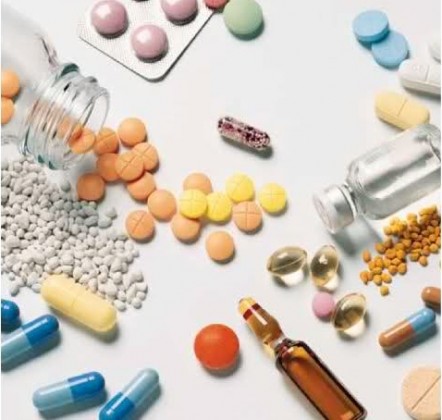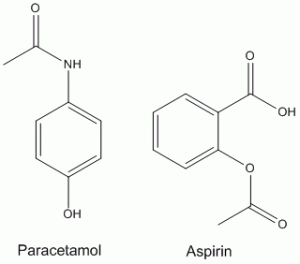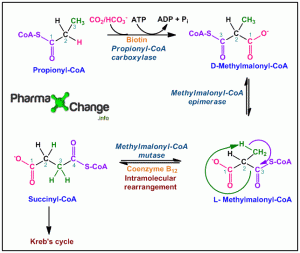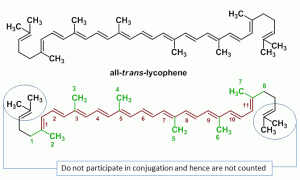Drugs can be given to a person in a variety of formulations. Formulations is a mixture in a particular state that the drug is supplied to the patient. It can be either solid, semisolid or liquid formulations. The type of formulation given to a patient depends upon the type of patient and the condition of the patient (such as age, sex, and health condition). Also, the type of formulation is specific for particular routes of administration.

Solid Formulations
Solid formulations are generally given orally and are used most commonly by patients.
Tablets
Solid drugs are administered in the form of tablets. The tablet is disc shaped and is made by compressing a granulated powder in a die of the suitable machinery. It is made up of inert filler material since the drug maybe required only in small quantities. To help the tablet disintegrate in the GI tract it is coated with a substance like starch which swells up when in contact with fluid , such substances are called excipients. Binding agent to hold the tablet together and finally lubricating material to prevent the tablet from sticking during manufacture. They can be sugar coated or film coated. Some are given as chewable tablets and flavourings can be added to this. These are called Dragees.
Enteric Coated Tablets
These tablets are coated with a material that does not disintergrate in the acidic medium of the stomach but disintegrates in the alkali medium of the intestine. These have EC written on their cover and it is essential that these drugs are not crushed and swallowed. Now some of these preparation are made in which small portions of the drugs are enteric coated into tiny balls and are enclosed in a capsule. This can be opened and sprinkled on a suitable medium and then swallowed.
Capsules
Capsules come in two forms: Hard and soft. Hard contains the drug in solid form and the soft contains the drug either in liquid or semi – solid form. The soft capsules are useful for the drugs that are hard to dissolve in water these are then dissolved in non – toxic solution such as propylene or glycol and can be easily absorbed in the GI tract.
Sustained Release Preparations
Useful of drugs that have a short half life and hence such drugs are formulated to be released slowly into the digestive tract. Also called slow release or retard release. This is also done to improve the compliance to the drug.
- the drug is embedded in a matrix of relatively inert material such that the drug release is slow.
- The drug can be prepared in layered tablets such that the each layer of drug is coated by some inert material and hence once the layer disintegrates the drug is released and till the next layer is not disintegrated there is no further release of drugs.
- The drug can be made in the form of pellets which are coated by different thickness of the inert material and the one with the thinnest coating would disintegrate the fastest and the other will not. These pellets are then filled in capsules also called spansules and tablets called durules.
Controlled Release Tablet
Since the amount of drug that would be disintegrated would depend on the composition of the GI tract of the individual and hence there would not be much uniformity there is a new technique called the controlled release tablets. In this case the drug is covered with a semi permeable membrane and hole is punctured through this membrane with the help of a laser. Once the tablet enters the GI tract the water seeps inside thru the hole and the tablet swells and due to the difference in the osmotic pressure the drug is released. This method is preferred since the amount of drug released is same for most of the people since it is not pH dependant. These drugs would have CR or SR written on the cover.
Liquid and Semisolid Formulations
Liquid and semisolid formulations are easier to absorb as compared to solid formulations and are can be administered via a variety of routes of administration.
Oral Liquid Preparations
Such preparations are made when it is difficult to swallow the medicines. Flavourings can be added. But it should not be that flavour is given a lot of importance since then drug abuse is possible. Sugar is added in some cases but mostly sorbitol (sugar alcohols) is now used and it is good since it acts as a osmotic laxative and can prevent drug abuse. When the drug is insufficiently soluble in water then it is dissolved in alcohol such a drug is called exilirs. Incases where the drug is used as a solid and alcohol is not used for dissolving then such solutions are called suspension and when the liquid which is not soluble is used then it is called emulsion. Such drugs should be well shaken before use.
Topical Preparations
The application of a drug to an area of the body for direct treatment is called topical application and is not restricted to the skin and hair but can be used in the mouth and entire GI tract during operations.
- Drops: Eye and nose drops are made isotonic to avoid pain and discomfort on application. The eye drops are either aqueous or oily suspensions to be put into the eye. The nasal drops are aqueous since oily solution can hinder the ciliary action of the mucosa and also enter the trachea and lead to aspiration pneumonitis. Ear drops are oily solutions that can adhere to the aural cavity.
- Creams and Ointments: mainly used for skin treatment. Creams have an aqueous base such that the water evaporates quickly and the drug remains on the surface. It remains on the superficial layer of the skin and very little is absorbed into the systemic circulation where it can have such an action. Ointments are lipid base. When they are applied on the body they shut of the skin from air and the sweating still occurs as a result of which the skin is softened and there is more penetration of the drug into the tissue. Absorption can be significant.
- Pastes: Pastes have powder and are water repellant and hence help in protecting the skin from moisture.
- Gels and Lotions: are alcoholic based and useful in application where there is hair. Since the evaporation is fast very little of the drug penetrates.
Sublingual and Buccal Administration
Utilizes the mucosa of the mouth as an absorptive medium. This is useful when the drug is active in very low concentration in the blood. When the drug is administered like this it directly enters the blood stream and has a systemic action where required. It is also useful to bypass the hepatic first pass metabolism. This method avoids the mixing of the drug with food and other gastric juices which may impede absorption. Sublingual is under the tongue and is allowed to dissovle e.g. glycerl trinitrate Buccal is between the cheek and gum and is allowed to dissovle. E.g. oxytocin Buccal tablets are too large to be administered sublingually.
Intranasal Administration
It is mainly a topical application where the drug is absorbed from the epithelium of the nasal tract. Mainly used to relieve nasal congestion but can also be used for drugs that are destroyed by the enzymatic action when taken in by the mouth.
Transdermal Administration
The skin can also be used for direct application and absorption of the drug but the drug is very slowly absorbed and in very less quantity and this is due to the presence of keratin in the cells of the skin. Therefore drugs that are needed in very small quantities and for long period of time are administered in this way. These include transdermal patches and gels and spray.
Rectal Administration
Suppositories: are used for drugs being administered through the rectum. The drug is absorbed by the rectal mucosa and directly into the blood stream. Advantages: when a patient is unconscious then oral administration is difficult and hence this is easier. Nausea, clients with difficulty in swallowing, to avoid the hepatic first pass, where it is difficult to find a vein. Disadvantage: anal or rectal irritation, client education, risk of perforation of the rectum, need to be refrigerated since they melt with body heat.
Enemas: are also preparations for rectal administration but are liquid. These can be used for topical or systemic treatment and also for bowel movement. Topical and systemic applications the solution is hypotonic such that fluid will be taken up by the body along with the active ingredient. In case of bowel motion the solution is hypertonic to cause an outward flow of water from the body into the distal portion of the digestive system.
Vaginal Administration
are also called pessaries. Topical treatment. The drug should coat all the vaginal mucosa and for this the drug should be entered as high as possible into the vagina.
Parental Drug Administration
Any method of drug administration that avoids the GI tract is called parental administration. Drugs can be inserted anywhere with the help of injections.
Intradermal administration: drug is inserted into the dermis. Rarely used since absorption is slow and only small quantities can be given. E.g. Local Anesthesia
Subcutaneous injection: Slow drug absorption but mainly for drugs that cannot be given through the mouth for e.g. Insulin. This method is used when other modes are harmful. The effect of the injection can be decreased by adding adrenaline as this would cause vasoconstriction and slow absorption of the drug. If another drug is added like hyaluronidase it will enable the drug to be absorbed more quickly since it will destroy the tissue cement the hyaluronic acid.
Intramuscular Injections: The skeletal system is highly vascular and hence drugs with low molecular weight can easily pass through by direct diffusion into the blood stream thru the capillary walls. Mainly lipid soluble drugs are easily absorbed. Lipophobic drugs are absorbed into the lymphatic system. When mixed with oil the drug disintegrates slowly and may take several weeks for action called the depot injections. Diadvantage: is the damage to the nerves and hence care has to be taken while giving such injections.
Intravenous Injections: this administration avoids the process of absorption and hence very fast action can be achieved.
Nebuliser and Inhaler administration
administer to the lower respiratory passage of the body.
References
- Goodman & Gilman’s The Pharmacological Basis of Therapeutics by. Joel Griffith Hardman, Lee E. Limbird, Alfred G. Gilman. 10th Ed.
- Rang & Dale’s Pharmacology by. Humphrey Rang, Maureen Dale, James Ritter, Rod Flower. 6th Ed.
- Generic Drug Formulations by. Volker Bühler, Bernhard Fussnegger. 4th Ed.




Exactly where is the facebook like link ?